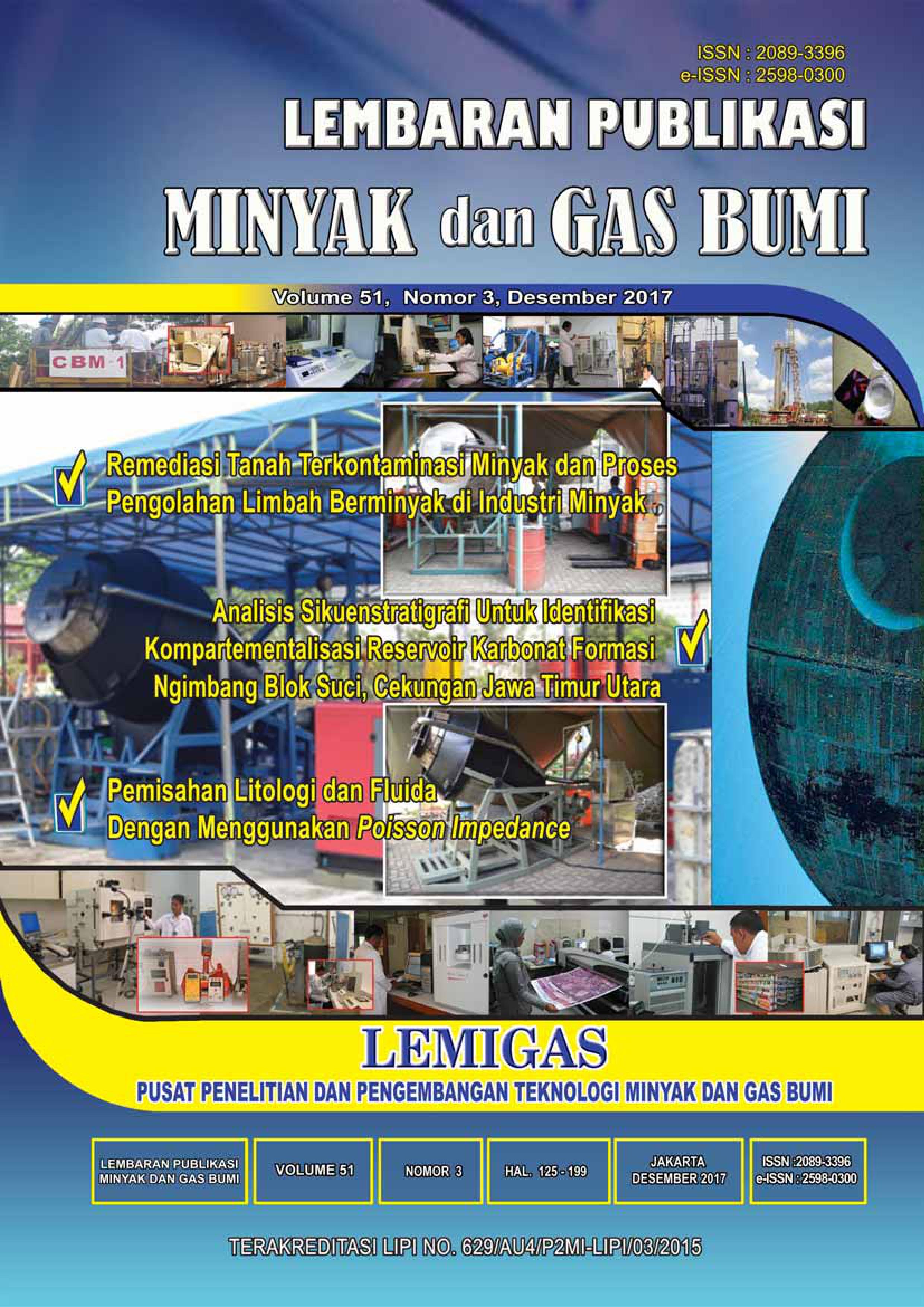IDENTIFIKASI RESERVOIR DAN HIDROKARBON DENGAN MENGGUNAKAN METODE SYNCHROSQUEEZING TRANSFORM (Reservoir and Hydrocarbon Identification Using Synchrosqueezing Transform)
DOI:
https://doi.org/10.29017/LPMGB.51.3.29Kata Kunci:
Synchrosqueezing transform, continuous wavelet transform, S-transform, karakterisasi reservoir, frekuensi (Synchrosqueezing transform, reservoir characterization, Frequency)Abstrak
Karakterisasi reservoir yang menggunakan metode berbasis frekuensi (metode dekomposisi spektral) memberikan informasi tentang kemenerusan reservoir dan hidrokarbon lebih akurat apabila kemampuan resolusi frekuensinya juga baik. Metode dekomposisi spektral Continuous Wavelet Transform (CWT) yang berbasis Transformasi Fourier menggunakan skala dan translasi window wavelet untuk mengkuantifi kasi resolusi frekuensinya. Metode tersebut seringkali digunakan dalam indikator zona reservoir dan hidrokarbon namun masih memiliki resolusi frekuensi yang kurang akurat sehingga frekuensi zona reservoirnya pun overlapping dengan zona non-reservoir. Penelitian ini ilakukan untuk meningkatkan resolusi frekuensinya sehingga informasi tentang reservoir dan indikasi hidrokarbon lebih valid. Synchrosqueezing Transform (SST) merupakan metode dekomposisi spektral yang lebih kompleks karena mengkolaborasi metode Empirical Mode Decomposition (EMD) dan Transformasi Hilbert dengan metode CWT. Sinyal didekomposisi dengan metode EMD, lalu diproses dengan penskalaan dan tranlasi window wavelet menggunakan metode CWT, kemudian dilakukan ekstrak frekuensi sesaatnya menggunakan Transfromasi Hilbert sehingga sensitivitasnya meningkat. Metode SST dan CWT diaplikasikan pada data sintetik untuk mengetahui akurasi pemisahan frekuensi. Selanjutnya, metode-metode ini diaplikasikan pada data seismik dan data sumur SNR-1 dan SRI-1 sebagai kalibrator. Hasilnya menunjukkan bahwa metode SST mampu mengidentifikasi frekuensi reservoar dan hidrokarbon dengan baik dibandingkan dengan metode CWT. Respon kemenerusan reservoir dan potensi hidrokarbon ditunjukkan dengan amplitudo tinggi pada frekuensi 20 Hz.
A frequency-based method (sepctral decomposition) can provide accurate information dealing with reservoir and hydrocarbon indication if its frequency resolution is accurate. Spectral decomposition method such as Continuous Wavelet Transform (CWT) built on Fourier Transform which uses scale and translation of wavelet to quantify its frequency resolution. However, it occur ambiguous frequency resolution so that tunning frequency of reservoir and non-reservoir are overlapping. This study was conducted to increase the frequency resolution in order to avoid invalid information of reservoir and hydrocarbon indication. Synchrosqueezing Transform (SST) is a more complex algorithm than CWT because it collaborates the Empirical Mode Decomposition (EMD) and Hilbert Transform with CWT method. Initiated by signal decomposition process then continued to scaling and translation of wavelet window in CWT phase. The final stage is to extract the instantaneous frequency using Hilbert Transform in order to obtain more sensitive frequency resolution. SST and CWT method were implemented to synthetic data to know each of frequency separation accuracy. Furthermore, these methods were also applied to seismic data and well data SNR-1 and SRI-1 as calibrator. The result showed that the SST method was robust to identify the reservoir and hydrocarbon indication better than CWT method. Reservoir and hydrocarbon response are detected on high amplitude which is tunned at the frequency 20 Hz.
Referensi
Butorin, A. V., 2016. Application of wavelet spectral decomposition for geological interpretation of seismic data, Journal of Geological Resource and Engineering 5, 231-241
Daubechies, I., Lu, J, dan Wu, H. T., 2011. Synchrosqueezed wavelet transforms: An empirical
mode decomposition-like tool: Applied and Computational Harmonic Analysis, 30, 243–261.
Daubechies, I, dan Maes, S., 1996. A nonlinearsqueezing of the continuous wavelet transform based on auditory nerve models, in A. Aldroubi, and M. Unser, eds., Wavelets in medicine and biology: CRC Press, 527–546.
De Coster, G. L., 1974. The geology of the Central and South Sumatra Basin. Proceedings 3rd Annual Convention IPA, Juni 1974, Jakarta
Huang, N. E., Shen, Z., Long, S. R., Wu, M. C., Shi, H. H., Zheng, Q., Yen, N. C., Tung, C. C, dan Liu, H. H., 1998. The empirical mode decomposition and the Hilbert spectrum for nonlinear and nonstationary time series analysis: Proceedings of the Royal Society of London, Series A: Mathematical, Physical and Engineering Sciences, 454, 903–995.
Partyka, G. J, dan Lopez, J. 1999. Interpretational application of spectral decomposition in reservoir characterisation. The Leading Edge, 18, 353-360.
Saadatinejad, M. R, dan Hassani, H. 2013. Application of wavelet transform for evaluation of hydrocarbon reservoirs: example from Iranian oil fi elds in the north the Persian Gulf, Process Geophysics, 20, 231-238
Sarjono, S, dan Sarjito., 1989. Hydrocarbon source rocks identifi cation in the South Palembang Sub- Basin. Proceeding of 18th Annual Convention Indonesian Petroleum Association. 426-467
Sinha S, Routh. P. S, Anno, P.D, dan Castgana J. P., 2005. Spectral decomposition of seismic data with continuous wavelet transform, Geophysics, Vol.70, No.6, p. 19-25
Wu, H.T., Flandrin, P, dan Daubechies, I., 2011. One or Two Frequencies? the Synchrosqueezing Answers. Advances in Adaptive Data Analysis (AADA).

